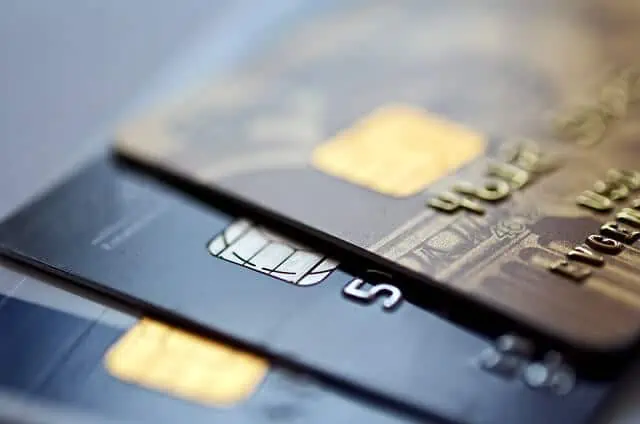Building credit as a college student can be challenging if you have no credit or a thin credit file, but there are some ways to get started and make it easier. Many people go to college with no credit history, which means they have no way of getting approved for loans or even having a cell phone.
The following five tips will show you how you can start building your credit now and avoid the hassle later in life.
Best Credit Cards for Students to Start Building Credit – Top Picks
|
Primary Rating:
4.7
|
Primary Rating:
4.0
|
Primary Rating:
4.4
|
|
Free, no monthly fees
|
No annual fee
|
No annual fee
|
How to Build Credit as a College Student
When you enter college, you may or may not have a credit history already under your belt. This can be from prepaid debit cards you’ve used as credit cards for kids, being an authorized user on your parents’ accounts, or possibly even making rent payments.
But if you don’t have any of these lines of credit starting as a college student, know that you’re not too late.
This is the perfect time to start thinking about how to build credit as a college student because you’re likely seeing several credit offers for student cards.
College students can use a student credit card to start building their credit if they have a pre-approval letter they received in the mail or through email.
But this isn’t the only way to bolster your credit report while in college. While student credit cards might sound appealing, you may want to consider all your options before accepting the offer.
Related:
- How Parents Can Help Their Children Start to Build Credit
- Best Debit Cards for Teens [Reviewed by a Father + CPA]
Ways to Build Your Credit Score While in School
You’ve got several options to build your credit score while in college. Using your credit wisely early on can help you receive more favorable terms later in life when you need them.
1. Become an Authorized User
By becoming an authorized user on someone else’s credit card—be it a parent, guardian, or other trusted adult—the credit card issuer will send a credit card to the primary cardholder having your name appear on the card.
The credit card company holds the person who signed up to be the primary account holder responsible for paying charges on their account.
If an authorized user on an unsecured card makes purchases but doesn’t pay toward the balance, they are not responsible for repaying the balance.
Before getting an unsecured card and being added as an authorized user, make sure you and the primary account holder have agreed on whether or not to use the card you receive.
Further, you should determine this ahead of time because any charges that you make will be their legal responsibility, even if you agree to pay them.
Credit card issuers report your balance and payments every month to credit bureaus. So, even if you don’t receive a physical card, it affects your credit in the same way.
If you don’t meet the requirements for credit cards on your own, having an authorized user status on the account of a cardholder might be beneficial to your credit history and “payment history,” a credit scoring component.
It may cut the time it takes to get a FICO score—one of the most common credit-scoring models—down to less time if you don’t already have one used by credit reporting agencies to mark your creditworthiness. Further, it might also get credit cards in your hands sooner than later.
Related: Best Credit Cards for Students with No Credit
2. Secured Credit Cards
When you turn 18, you become eligible to apply for a credit card in your name. However, you might not have the positive credit history that credit card companies want to see (or any credit history at all).
If this is the case, you might consider applying for a secured credit card to establish credit in college and make payments on time. With enough time, these card payments and good credit habits should be reported to credit bureaus, reflecting on your credit report.
Secured credit cards often serve as the first step for young adults or people who don’t have an established credit history to have access to credit.
Secured credit cards work by having the cardholder front a security deposit to open an account, reducing the risk to card issuers of you defaulting or missing a payment.
Usually, minimum deposits are in lower denominations, between $200 to $500 to start. This represents your credit limit.
Once you apply for a secured credit card and make the security deposit, these secured credit card options work like any other card.
Unlike prepaid cards, the security deposit funds don’t load onto your card and do not get directly used for purchases. Instead, this deposit will be forfeited if you fail to pay your credit card bill.
So, if you make your payments on time, your regular spending activity and collateral will help you to build your credit. You may opt to move to unsecured credit card issuers’ options to provide you more financial flexibility with time.
Secured cards work best for people with no or bad credit.
Related: 9 Best Credit Cards for No Credit History [Starter Credit Cards]
3. Credit Builder Loans
Credit builder loans and credit cards are very different in how you fund and use them, but both are useful for building credit.
A credit builder loan functions as a tool for people who have low or no credit history. They can use them to begin building up their credit scores by establishing a credit history.
If you build up your score enough, you can qualify for better terms on a credit account, car loan, or other forms of financing.
These loans do not require you to have stellar credit to receive approval, just the income to make payments. They work by depositing money into a bank account and borrowing money from it while making repayments.
You’re essentially taking money out of one pocket and putting it in the other, though you’re doing so with the understanding it builds credit for you.
This will help establish better credit limits on a future credit card account, earn a better interest rate, or receive better overall terms on credit.
Typically offered by credit unions or other smaller financial institutions like a community bank, these loan payments will get reported to the credit bureaus, helping you build your credit.
Related: Best Debit Cards for Kids
4. Apply for Low Limit Unsecured Credit Cards
If you have developed good money habits and think you can handle a line of credit, you may want to start with a low-limit unsecured credit card.
You have several options like a student credit card, gas card, or another low-balance credit card available from credit card companies.
These are all great options if your children attend college and need a credit card that works for expenses away from home.
Likewise, the unsecured card option works for young adults who work full-time and need a way to access credit while possibly earning rewards, cashback, or other benefits from using unsecured credit cards.
You can apply for a card like the Petal® One or Petal® Two credit cards. These cards offer cashback and avoid annual fees—both features you should look for in a first card.
These types of cards can help with beginning to build a credit history. Further, if your children will have student loans, these will factor into their credit history and build a credit profile for lenders to evaluate future credit needs.
However, if you’d like the card to be under their name and they are underage, they’ll need to look first at getting a prepaid debit card for kids and teens.
Further, you might consider a college student credit card like Petal® 2 “Cash Back, No Fees” Visa® Credit Card.
Petal® 2 “Cash Back, No Fees” Visa® Credit Card
The Petal® 2 “Cash Back, No Fees” Visa® starter credit card wants to take to heart people’s thoughts on it being time for a card company to help people succeed financially.
To heed this call, Petal® has used modern technology to design credit card products that help you budget, control your spending, and build credit.
This card is best for those with thin to no credit files because Petal® accepts applicants based on cash flow underwriting alone—meaning no credit history is required.
And if you have a credit score, you can get the opportunity for acceptance with a fair credit rating, meaning you need a minimum credit score of 600 or better. If you have a credit score of 720 or better, Petal® auto-approves your application.
This credit card issuer reports your payment history to all 3 major credit bureaus, helping you build credit.
With 2% – 10% cash back at select merchants and up to 1.5% cashback on eligible purchases after making 12 on-time monthly payments, Petal® 2 might be an excellent choice to consider as a beginner credit card.
This credit card charges no fees whatsoever, letting you avoid simply holding the card in your wallet.
- No annual fee–in fact, no fees of any kind
- Up to 1.5% cash back on unlimited everyday purchases (1% right away increases to 1.25% after 6 monthly on time payments and 1.5% after another 6 monthly on time payments)
- 2-10% cash back at select local and national merchants
- See if you’re pre-approved in minutes without impacting your credit score
- No credit score? No problem. Credit history isn’t required for approval
- Get an automatic credit limit increase after 6 qualifying on time monthly payments. Terms apply
- Build credit alongside hundreds of thousands of Petal card members
- Petal reports to all 3 major credit bureaus
- Pay with ease with a contactless card or on your phone using Apple Pay, Google Pay, or Samsung Pay
- Zero liability fraud coverage
- No security deposit required
- Card issued by WebBank
- Cash back on everyday purchases, as well as potential for extremely high cash back with select merchants
- No fees whatsoever
- Minimum credit score for consideration is higher than Petal® 1.
5. Apply for a Credit Card with a Co-signer
If you can’t become an authorized user on a credit card, you might consider becoming a co-signer on one. Generally harder to find, these types of cards carry a legal responsibility for both account owners.
Authorized users don’t need to face the music if they can’t pay their credit card bill, as the primary cardholder remains liable to the lender.
Having a co-signer credit card works similar to carrying a joint brokerage account or bank account—you both have access to the funds. However, they differ because joint accounts list both owners as equals, meaning they share the account title and legal responsibility.
Co-signer cards usually only list the primary cardholder as the account owner. Both face legal responsibility for making payments, and the debt appears on both users’ credit reports.
What is a Credit Score?
A credit score is a number that predicts how likely you are to repay borrowed money.
It’s a three-digit numerical representation of the information in your credit report, managed by credit bureaus like Equifax, Experian, and TransUnion.
This score ranges from 300 to 850 under the FICO scoring system, with lenders looking at these numbers when deciding whether or not to approve potential loans.
The most critical factor in determining your credit score is payment history, accounting for about 35% of the total. The other most significant factors are amounts owed (30%) and length of credit history (15%).
Balances on different types of loans make up less than 15%, while new account activity only contributes about ten percent.
Building good credit doesn’t happen overnight, as it measures your ability to manage loans and lines of credit wisely and responsibly over time.
Related:
- How Old Do You Need to Be to Get a Credit Card? [Minimum Age]
- How Old Do You Have to Be to Have or Open a Bank Account?
What Goes into a Credit Score?
1. Payment History
Making timely payments is essential for your credit score, representing as much as 35% of your total FICO score.
Missing one payment can harm your credit score, though it shouldn’t ruin it entirely.
Why such a significant impact? Lenders want to assess your ability to repay debts promptly, meaning you pay what you agree to pay when you agree to pay it.
Do this consistently and over long periods, and you will see your credit score increase.
Because of the outsized importance of this credit factor, staying on top of payment due dates and amounts becomes a necessity to build credit.
Keep track of when payments must go to creditors by setting up automatic payments where possible.
Setting your bills on auto-pay can save not only time for individually initiating each payment but also the headache of being late and dinging your credit score.
2. Total Available Credit / Credit Utilization Ratio
Your credit usage, especially concerning your available credit, can determine your credit rating as well.
The metric used to measure this credit usage, called the credit utilization ratio, is calculated by dividing your outstanding revolving credit balances by your total available revolving credit balances.
This ratio provides valuable insight to creditors about how you use credit.
Lenders want to know how much credit you are using, especially how much credit is available.
A high credit utilization ratio (above 30%) will likely hurt your credit score, while a low one (below 20%) may help it or not have any effect at all on your credit rating.
This accounts for 30% of your credit score.
3. Length of Credit History
Lenders want to see how long you’ve had credit and how well you’ve handled while open. This credit factor can determine 15% of your FICO score by evaluating the average age of your open lines of credit.
All things equal, longer average credit histories result in better credit scores.
4. Types of Credit (Diversity or Mix of Credit Lines)
Not only do lenders care about your history and your ability to make timely payments (both huge credit factors), but they also like to see a diversity of good credit opportunities you’ve had in the past and maintain today.
This means having several credit accounts, managing your credit limit responsibly, and maintaining an excellent payment history.
Children won’t have many opportunities to have a wide array of credit lines, but they don’t need these just now. Instead, they can start with a single line of credit as an authorized user through a family member’s existing or new credit line.
If teenagers start building credit now, this new line of credit will still help them in the long run so long as the account remains open.
5. Credit Inquiries (New Attempts to Access Credit)
Creditors also want to see how often you seek new credit. Regularly going after financing may indicate an increased risk because you constantly seek new forms of financing to make your finances stay afloat.
Whether true or not, this can still serve as a red flag on your score, potentially hurting your credit if done too often.
These pulls on your credit, called hard inquiries, stay on your report for two years or longer, depending on the type of inquiry.
A child or person with a thin credit file shouldn’t worry too much about this, as any inquiry that hits their report now will likely fall off before they need it.
At this age, the child wants to establish credit and slowly build their credit limit through having wise credit use and more extended credit history.
Will Making Student Loan Payments Affect My Credit?
Unequivocally—Yes. Making these student loan payments on a timely basis can help with building your credit score.
If you took on federal student loans before the CARES Act and subsequent federal student loans deferrals but needed to begin making payments, as you pay off your balance, those payments will help build credit.
These payments on your student loans will count toward building a good credit score.
Like with all lines of credit, the number of student loan payments and your payment history will affect your credit score.
A good repayment record will increase your overall creditworthiness by showing lenders they can trust you to pay back loans in full.
These actions can provide you with favorable loan terms in the future, meaning a better interest rate and thus a lower credit card balance if you don’t repay it in full each month. That’s money kept in your pocket on account of having a good credit score.

















